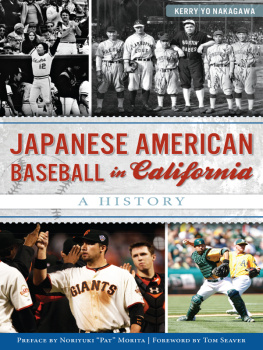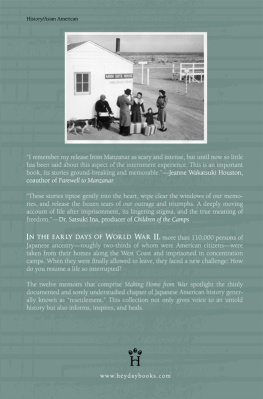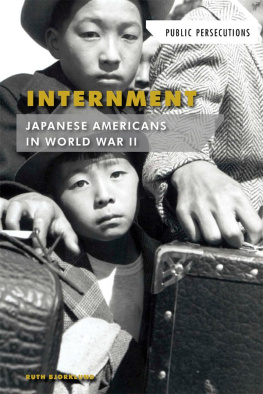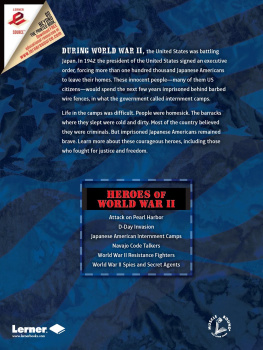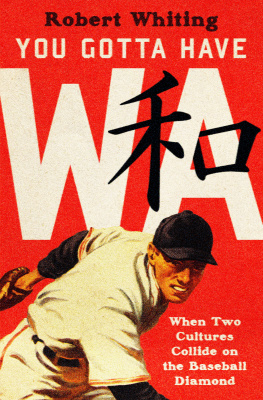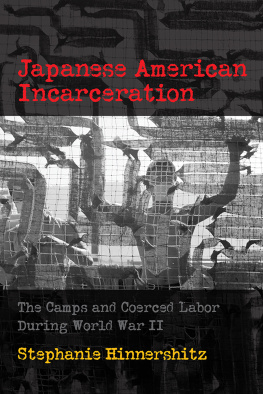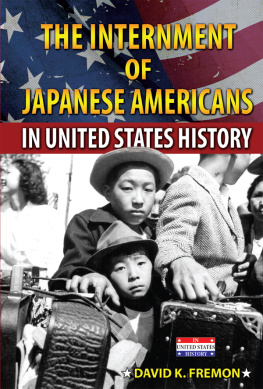
Published by The History Press
Charleston, SC 29403
www.historypress.net
Copyright 2014 by Kerry Yo Nakagawa
All rights reserved
First published 2014
e-book edition 2014
ISBN 978.1.62585.114.7
Library of Congress CIP data applied for.
print edition ISBN 978.1.62619.582.0
Notice: The information in this book is true and complete to the best of our knowledge. It is offered without guarantee on the part of the author or The History Press. The author and The History Press disclaim all liability in connection with the use of this book.
All rights reserved. No part of this book may be reproduced or transmitted in any form whatsoever without prior written permission from the publisher except in the case of brief quotations embodied in critical articles and reviews.
To my mama, Yoshiko Rose Nakagawa, who shared that Family, Food, Faith and True Friends are the essentials of life and that you should always be proud of your Royal Samurai roots.
CONTENTS
ACKNOWLEDGEMENTS
To keep the flow of goodness coming, always be thankful.
Nakagawa proverb
I remember walking down my hallway as a child and looking up to see the photo of my uncle Johnny standing next to Lou Gehrig, Kenichi Zenimura and Babe Ruth. I asked him once about the photo, and he modestly said, I was on Lou Gehrigs team, and we beat Babe Ruths team 133. When I began coaching my son, Kale, and Brandon Zenimura as Little League all-stars, I realized that two generations had gone by since the Nakagawa and Zenimura families had first shared the baseball diamond. I knew these two young all-stars had no knowledge of the unique bond shared by our family baseball history. I immediately began a quest to record data, acquire photos and artifacts and conduct oral histories. Starting with my own family, and then reaching out to many others, I gathered the history from the pioneers, who were now in their eighties and nineties. The Nisei generation is almost gone now, but their efforts, sacrifices and courage will never be forgotten. This missing chapter and hidden legacy that was part of American baseball history led to the creation of the Nisei Baseball Research Project (NBRP), a nonprofit organization that has given us an opportunity to honor our heroes and to bring awareness and education about Japanese American concentration camps through the prism of baseball and our multimedia projects.
In 2001, our book, Through a Diamond: 100 Years of Japanese American Baseball, was born. This presentation would not have existed without the generosity of George and Sakaye Aratani and my childhood swim team coach of the Fowler Flippers, John G. Goode of Davis Skaggs Investment Management of San Francisco. Our publisher, Terri Boekhoff, was our guardian angel, and she and her peers walked me through many labor-intense hours and believed in our fascinating history. A Hall of Fame thanks to Tom Seaver for contributing the foreword and putting Fresno and California on the map with his athleticism and humanity. Arigatos and hugs in spirit to my godpapa Noriyuki Pat Morita for your words and inspiration. To Terry Cannon (Baseball Reliquary) and Professor Richard Santillan (author of Mexican American Baseball in the Central Coast), thanks for introducing me to Jerry Roberts, Will Collicott and The History Press to allow our story, pioneers and legacy to have a rebirth. To the NBRP board, founding members and charter members, thanks for always stepping up when needed. I always use the term synergy or syncronicity when the right people, places and things line up for all the right reasons, so thanks to Jack Sakazaki, Steve Nakajo, Paul Osaki, Barry Rosenbush, Rosalyn Tonai, Gary Mukai, Chip Taylor, Junko Nakagawa, Sidney Mukai, Jim Noonan, Miriam Baum, Larry Gittens, Chris Terrence, Bill Staples, Kakei and Midori Nakagawa, Rick Walker, Steve Fjeldsted, Kurtis Nakagawa, David Okazaki, Tom ODoul, Terrence Smith, Dr. Marshal Flam, Larry Rodgers, Maria Elena Cellino and Kevin Tsujihara for all being part of this magnificent synergy. Finally, thanks to my familyand especially my inner circle clan. Thanks to my wife of forty-one glorious years, Jeri, for allowing me to follow my passions and dreams; to Kale and Jenna for keeping our samurai chain stronger than ever and doing us proud everyday with your beingness and humanity; and to Katie and Olivia Rose for bringing us a Gosei (fifth) generation of extreme pride and a superlative future. Of course, I cant leave out the blessed ones who went before us because your spirit brings us all the success that we experience with our projects, goals, ideas and dreams of passion. Namu Ami Dabutsu, and as always, Health, Spirit and Aloha.
PREFACE
I have a mental image of Hideo Nomo. Hes poised, motionless on the mound. His arms are extended high over his head, and hes holding the baseball in both hands. Slowly, he turns his back to the hitter, and then he recoils, firing a high fastball for strike three. I maintain that image along with the others of Willie Mays losing his cap as he rounds first base, stretching a single into a double; Hank Greenberg pounding a prodigious home run; Juan Marichal kicking his left leg high above his head in his windup; and Joe DiMaggio kicking the ground in disgust after being robbed of a World Series home run.
What all of these images have in common is that, while the players might have different facial features and skin color, they all represent the hundreds of immigrants and children of immigrants from around the worldincluding Asians, African Americans, Jewish Americans, Latinos and Italian Americanswho excel in Americas great common denominator: baseball. What is so special about my image of Nomo is that he is representative of the newest group of immigrants to have a significant impact on major-league baseballthe players from Japan and Asia.
There is nothing new about the passion of the Japanese peopleor of Japanese Americans, for that matterfor the great American pastime. In this book, Kerry Yo Nakagawa chronicles the one-hundred-year history of the Japanese fascination with the game, how it was exported to Japan shortly after the original rules of the game were codified, how the game grew in this country during the 1920s and 1930s and how the game was nurtured in Japan by many of the legends of the American game, including Lefty ODoul, Babe Ruth and Lou Gehrig.
As with black players of that time, the opportunity for the Nisei to compete was limited to the formation of the Japanese American Leagues throughout the western United States and Hawaii, and they played against college teams, Negro League teams and teams of barnstorming professional players like Ruth and Gehrig.
With great sensitivity and perception, Nakagawa describes how, during World War II, Japanese Americans became the only group of U.S. citizens in history to be imprisoned as a group solely because of their race. I can recall from my youth how, during these extremely difficult times for our people, these American internees would organize themselves into leagues and even travel from state to state to compete on the baseball diamond.
Japanese American Baseball in California: A History is far more what its title suggests. It is a compassionate description of the immigrant experience of the Japanese people seen through the prism of Americas grand game of baseball.
Noriyuki Pat Morita
FOREWORD
Growing up in Fresno, California, I was aware at an early age that baseball was an important part of our citys legacy. Our region has long been a great mix of cultures, and baseball was a common denominator. In the Central Valley California sunshine, we all began to thrive. By the 1930s, African Americans were playing in the Compress Leagues. The Nisei All-Stars were competing locally and even traveling to Japan on early barnstorming tours. In 1914, the prewar Twilight League from our area produced many professional players and major leaguers such as Frank Chance, who is in the Hall of Fame, and no-hit pitchers Monte Pearson and Jim Maloney, to name just a few.
Next page
